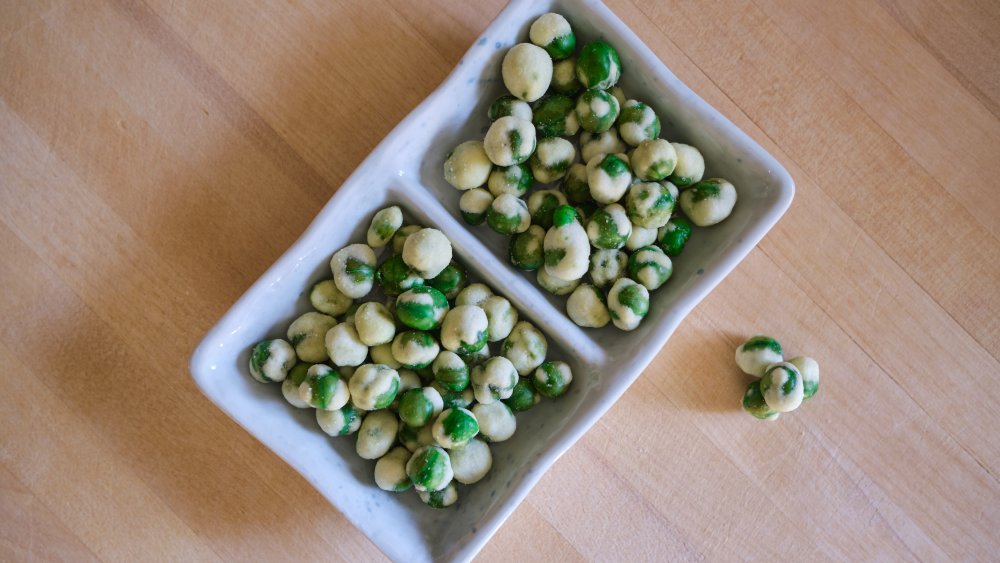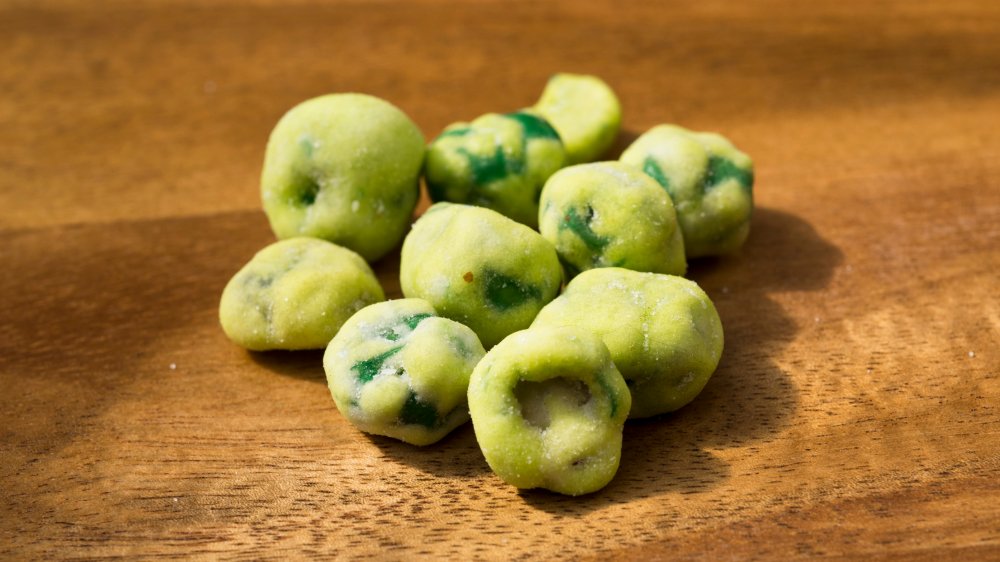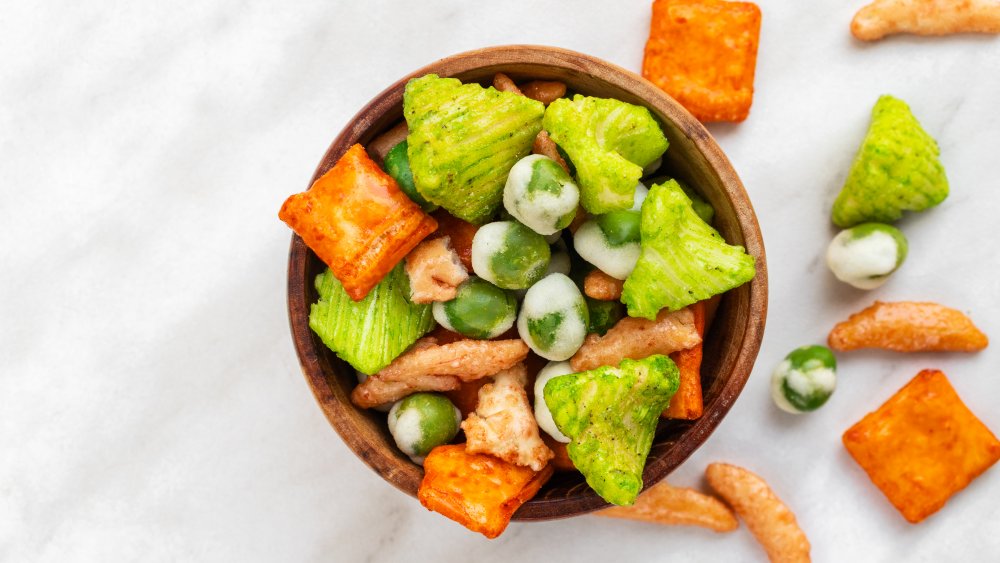The Truth About Wasabi Peas
Wasabi peas, or "wasabi mame," are an extremely popular snack in their native Japan. The Japanese food blog Favy suggests the peas best enjoyed with sake, although they pair nicely with beer, soda, water... and, of course, a box of Kleenex, since that wasabi coating hits you right in the sinuses (sure to power right on through any congestion). Cook's Info explains that wasabi peas are made from marrowfat peas, which are dried peas at the fully mature stage. These peas are then roasted and coated in oil and wasabi powder (whether real or fake). The blog cautions, "Some brands can be so hot they make your eyes water," and also notes that it can be difficult to eat too many of these at one time because of the heat.
A columnist with the Mirror Online reveals another hidden danger of wasabi peas, which he unwisely chose as a movie snack. He consumed an entire bag of the peas — although painful, they are nevertheless addictive — only to find, to his chagrin, that they'd "destroyed" his taste buds. For days, all other foods to him were "underseasoned and bland and rubbish," and tasted like wax or sand (at least he avoided the "cardboard" cliché).
Are wasabi peas a healthy snack?
The Snack Girl blog gives a thumbs-up to the peas — although at 130 calories per ounce, they are not exactly a "diet food." Still, the blogger seemed to think that it would be difficult to eat an entire ounce in one sitting, noting, "Your stomach would probably start to protest after about 10 peas, which is a good thing if you are trying to cut back on snacking."
According to the Mirror columnist, as well as a contributor to Serious Eats who spoke of her own wasabi pea addiction, it is most certainly possible, and even probable, to go way over that 10 pea (or 1 ounce) limit, so you should be aware that wasabi peas are also high in carbs (24 grams per ounce) and sodium (130 mg per ounce). You will be getting some iron, protein, and vitamins from the peas themselves, though, so at least there's that — although even peas aren't as healthy a vegetable as you may think.
What can you do with wasabi peas?
Assuming you have the self-control not to snarf down an entire bag of wasabi peas at once, you may be interested to know that the snack can be used in a variety of reci-PEAS (couldn't resist the bad pun). Epicurious suggests using them to put the crunch in crunchy wasabi salmon with lime, while Food Network re-purposes the peas for their wasabi pea-crusted chicken. Food 52 puts wasabi peas into a snack mix, and Martha Stewart incorporates them into a salad with goat cheese, sugar snap peas, snow peas, and pea shoots (leave it to Martha to use four different types of peas in a single salad). You can even use wasabi peas to make an unusual riff on peanut brittle, thanks to Kudos Kitchen by Renée.
If you're feeling particularly ambitious, the internet abounds in DIY wasabi pea recipes. The Kitchn offers this caveat, however: most of these recipes call for cooking and then roasting your own peas at very low temperatures, which can be an all-day process with a very low yield of peas for your time and trouble. They tried to circumvent this by using frozen peas, but found that the peas took a long time to crisp up and still remained chewy on the inside. Oh, and worst of all, the peas somehow absorbed all of the flavor from the wasabi powder, so no trace of the taste was left by the time they came out of the oven.


